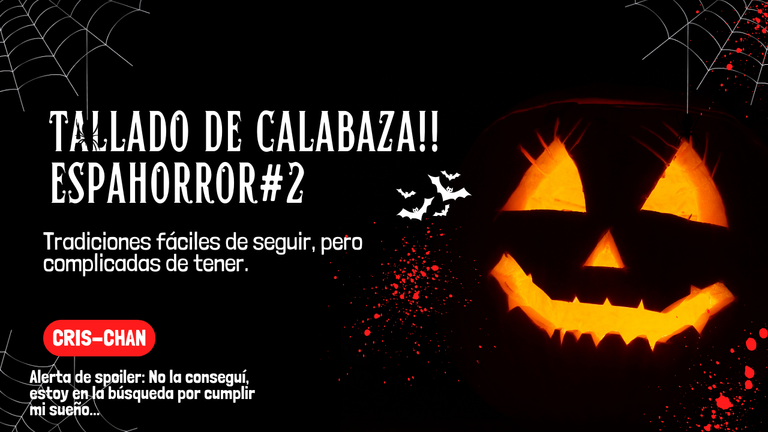
En muchas partes del mundo se celebra una festividad dónde niños se disfrazan y salen de casa en casa a pedir caramelos. Esa Festividad es conocida como Halloween, la fiesta más escalofriante del año. Pero ¿sabes de dónde viene esta tradición y por qué se celebra el 31 de octubre? Pues quédate en este post te contare un poco de su origen y mi tradición favorita, que lamentablemente en mi país no se celebra, pero quiero hacerlo todos los años.
Halloween es una palabra que viene del inglés antiguo y significa “víspera de todos los santos”. Esto se debe a que el 1 de noviembre es el día en que la Iglesia Católica conmemora a todos los mártires y santos que no tienen una fecha específica en el calendario. Pero la fiesta de Halloween tiene raíces mucho más antiguas y paganas que se remontan a los celtas, un pueblo que habitaba gran parte de Europa hace más de 3000 años.
Los celtas celebraban su año nuevo el 1 de noviembre, que marcaba el fin del verano y el inicio del invierno, una época oscura y fría asociada con la muerte. La noche del 31 de octubre, los celtas creían que se abría una puerta entre el mundo de los vivos y el de los muertos, y que los espíritus podían vagar por la tierra. Para ahuyentarlos, los celtas encendían grandes hogueras y se disfrazaban con pieles de animales o se pintaban la cara de negro. También dejaban comida y bebida en las puertas de sus casas para apaciguar a los fantasmas o les hacían bromas para divertirse.
Cuando el Imperio Romano conquistó las tierras celtas, se mezclaron las tradiciones romanas con las celtas. Los romanos tenían una fiesta llamada mundus patet, que significa “el mundo está abierto”, en la que también se rendía homenaje a los muertos y se les ofrecía sacrificios. Además, los romanos celebraban la fiesta de la cosecha en honor a la diosa Pomona, que se representaba con una manzana. De ahí viene el juego de morder manzanas flotando en agua que se hace en algunas partes del mundo en Halloween.
Más tarde, con la expansión del cristianismo, la Iglesia trató de reemplazar las fiestas paganas con otras cristianas. Así, el papa Bonifacio IV estableció el día de Todos los Santos el 1 de noviembre, y el día de los Fieles Difuntos el 2 de noviembre. Sin embargo, la gente siguió celebrando las antiguas costumbres la noche del 31 de octubre, que pasó a llamarse All Hallows’ Eve (víspera de Todos los Santos) y luego Halloween.
Una costumbre típica de Halloween es el truco o trato (trick or treat), que consiste en que los niños se disfrazan y van por las casas pidiendo dulces a cambio de no hacer travesuras. Esta tradición tiene su origen en la Edad Media, cuando los pobres pedían comida a cambio de rezar por las almas de los difuntos. También se relaciona con la creencia celta de que los espíritus podían pedir favores o regalos a los vivos.
Hoy en día, Halloween es una fiesta global que se celebra en muchos países con diferentes formas y nombres. Por ejemplo, en México se celebra el Día de los Muertos, una fiesta llena de color y alegría en la que se honra a los ancestros con altares, ofrendas, calaveras y flores. En China se celebra el Festival de los Fantasmas Hambrientos, en el que se queman papeles con dinero y se lanzan barcos de papel al agua para guiar a las almas perdidas. Y en Japón se celebra el Obon, una fiesta en la que se baila y se encienden farolillos para recibir a los espíritus de los antepasados.
La fiesta de Halloween se popularizó en Estados Unidos gracias a los inmigrantes irlandeses que llegaron al país en el siglo XIX huyendo de la hambruna. Allí, adaptaron sus tradiciones a las locales y empezaron a tallar calabazas con caras terroríficas para iluminarlas por dentro con velas. Estas calabazas representan a Jack O’Lantern, un personaje legendario que engañó al diablo y vagó por el mundo con una linterna hecha con un nabo.
Tallar calabazas para Halloween es mi tradición favorita, porque me parece que tiene un sentido muy espiritual. Es algo que te permite conectarte en un nivel más profundo con el velo o con el otro lado, que no es tétrico ni fantasmagórico. Además, ¿quién no ha querido tallar sus propias calabazas después de verlo miles de veces en los programas de televisión? Espero encontrar este año una auyama o calabaza decente para poder hacer un tallado y ponerle una vela dentro. Tal vez así pueda espantar a los malos espíritus o guiar a un fantasma amigable.
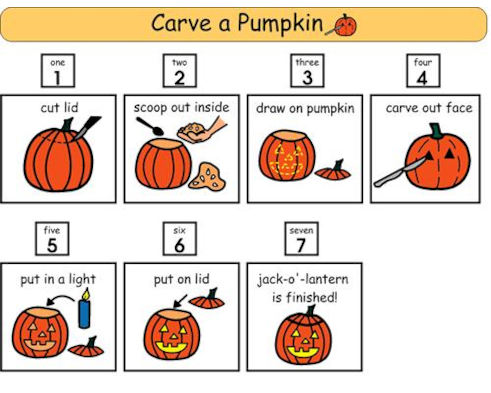
Pasos para tallar una calabaza
Como ves, Halloween es una fiesta muy antigua y diversa que tiene mucho que ver con nuestra relación con la muerte y el más allá. Pero también es una fiesta divertida y creativa que nos permite expresar nuestro lado más fantástico y terrorífico. Así que ya sabes, este 31 de octubre no te quedes en casa y sal a disfrutar de Halloween con tu disfraz favorito. ¡Y no te olvides de los dulces!

In many parts of the world a festival is celebrated where children dress up and go from house to house to ask for candy. That holiday is known as Halloween, the scariest holiday of the year. But do you know where this tradition comes from and why it is celebrated on October 31? Well, stay in this post and I will tell you a little about its origin and my favorite tradition, which unfortunately is not celebrated in my country, but I want to do it every year.
Halloween is a word that comes from Old English and means “All Saints' Eve.” This is because November 1 is the day when the Catholic Church commemorates all martyrs and saints who do not have a specific date on the calendar. But the Halloween holiday has much older and pagan roots that date back to the Celts, a people who inhabited much of Europe more than 3,000 years ago.
The Celts celebrated their new year on November 1, which marked the end of summer and the beginning of winter, a dark and cold time associated with death. On the night of October 31, the Celts believed that a door opened between the world of the living and the world of the dead, and that spirits could roam the earth. To scare them away, the Celts lit large bonfires and dressed up in animal skins or painted their faces black. They also left food and drink at the doors of their houses to appease the ghosts or played pranks on them for fun.
When the Roman Empire conquered the Celtic lands, Roman and Celtic traditions were mixed. The Romans had a festival called mundus patet, which means “the world is open,” in which homage was also paid to the dead and sacrifices were offered to them. Additionally, the Romans celebrated the harvest festival in honor of the goddess Pomona, who was represented with an apple. That's where the game of biting apples floating in water that is played in some parts of the world on Halloween comes from.
Later, with the spread of Christianity, the Church tried to replace pagan festivals with Christian ones. Thus, Pope Boniface IV established All Saints' Day on November 1, and All Souls' Day on November 2. However, people continued to celebrate the old customs on the night of October 31, which became known as All Hallows' Eve and then Halloween.
A typical Halloween custom is trick or treating, which consists of children dressing up in costumes and going around houses asking for candy in exchange for not getting into mischief. This tradition has its origins in the Middle Ages, when the poor asked for food in exchange for praying for the souls of the deceased. It is also related to the Celtic belief that spirits could ask favors or gifts from the living.
Today, Halloween is a global holiday celebrated in many countries under different forms and names. For example, in Mexico the Day of the Dead is celebrated, a holiday full of color and joy in which ancestors are honored with altars, offerings, skulls and flowers. In China, the Hungry Ghost Festival is celebrated, in which papers with money are burned and paper boats are launched into the water to guide lost souls. And in Japan, Obon is celebrated, a festival in which people dance and light lanterns to welcome the spirits of their ancestors.
The Halloween party became popular in the United States thanks to Irish immigrants who came to the country in the 19th century fleeing famine. There, they adapted their traditions to the local ones and began to carve pumpkins with terrifying faces to light them from the inside with candles. These pumpkins represent Jack O'Lantern, a legendary character who tricked the devil and wandered the world with a lantern made from a turnip.
Carving pumpkins for Halloween is my favorite tradition, because I think it has a very spiritual meaning. It is something that allows you to connect on a deeper level with the veil or the other side, which is not gloomy or ghostly. Plus, who hasn't wanted to carve their own pumpkins after watching it thousands of times on TV shows? I hope to find a decent pumpkin this year so I can carve it and put a candle inside. Maybe this way you can scare away evil spirits or guide a friendly ghost.
As you see, Halloween is a very old and diverse holiday that has a lot to do with our relationship with death and the afterlife. But it is also a fun and creative party that allows us to express our most fantastic and terrifying side. So now you know, this October 31, don't stay home and go out and enjoy Halloween with your favorite costume. And don't forget the sweets!
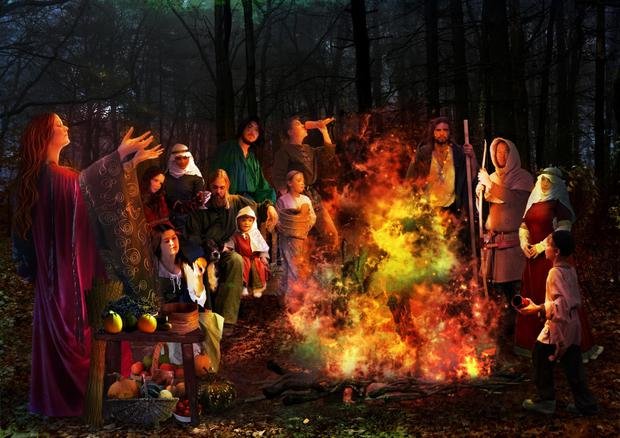
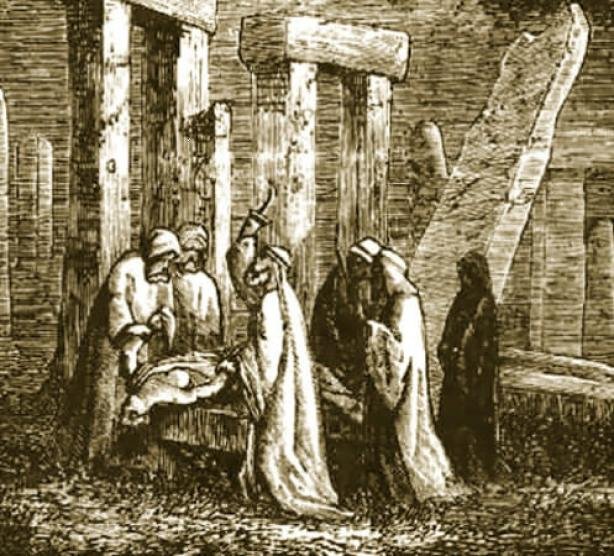

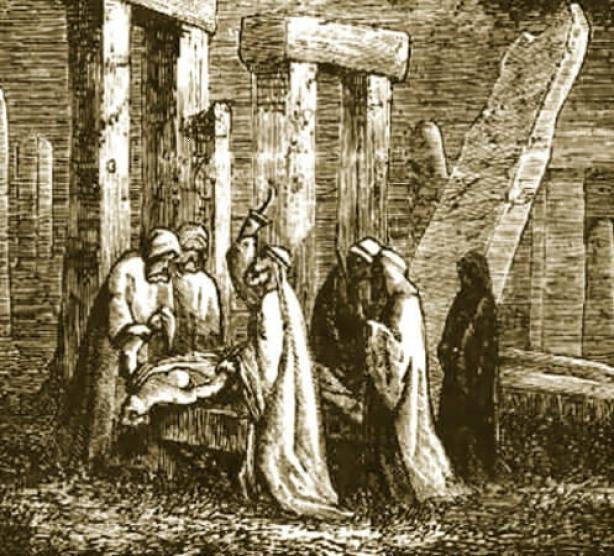
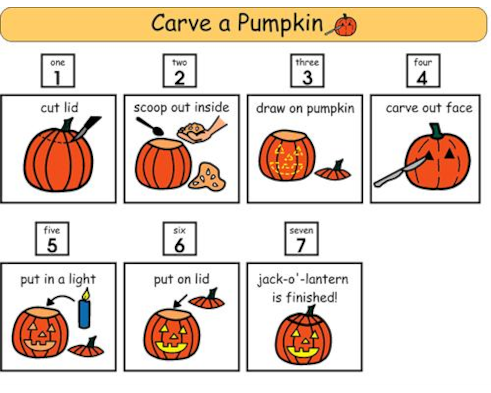
Muchas gracias 😊 y espero que tallen calabazas conmigo.
Me encanta que muchos hemos coincidido en que desearíamos tallar calabazas 🤗🎃🎃 y pensar que, en los países en donde sí se celebra Halloween, esto es extremadamente común 😂, deben estar cansados de hacerlo 😂. Excelente forma de narrar los orígenes de esta celebración, claro y conciso 🙌. Saludos, @fujoshi94 🤗🤗.
Gracias ☺️ la verdad quería hacer solo un breve repaso pues en mis otros post, también tendrán historias, lo abarcó más a fondo esto y por separado.
Si, todos queremos porque es algo que hemos visto a lo largo de nuestras vidas en series y películas, nosotros no tenemos esa oportunidad. Es como el ir a pedir dulces o disfrazarte.
Espero que podamos tallar calabazas las dos. Es algo que debemos hacer si o si. Ya quiero ver la tuya!! Aún busco mi calabaza perfecta 😄
Nos vemos en otro post ❤️